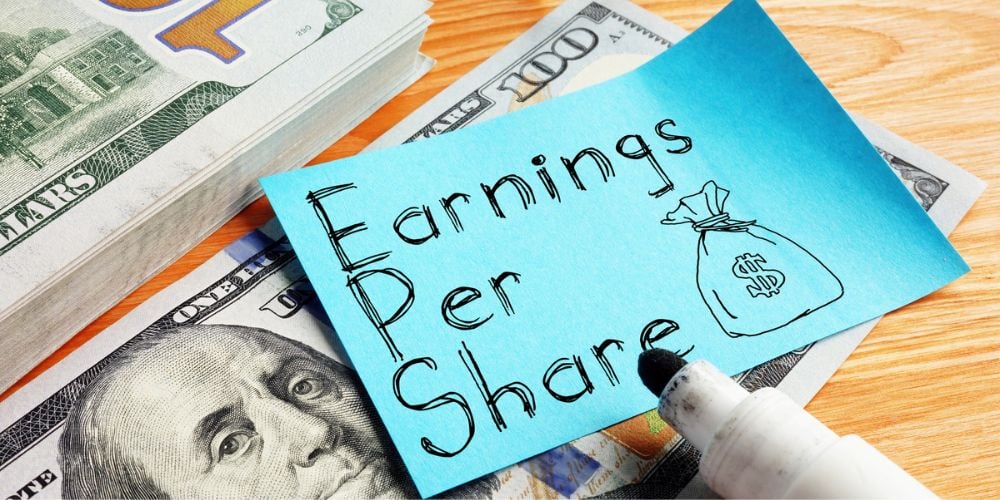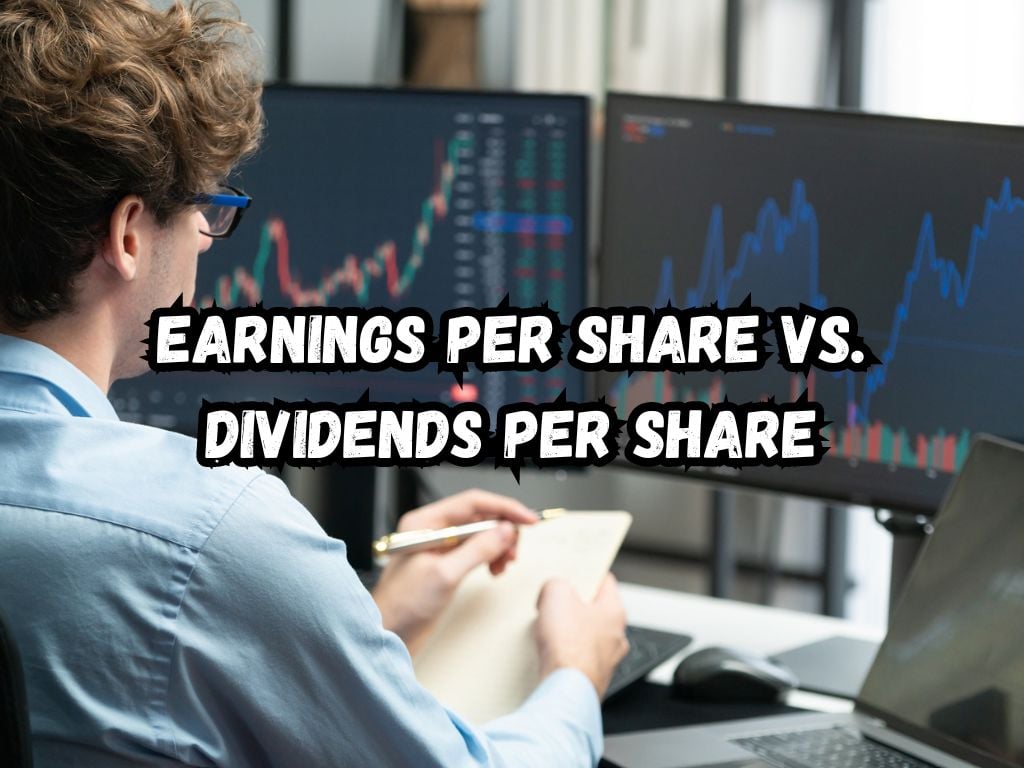In the investment universe, metrics such as Earnings Per Share (EPS) and Dividends Per Share (DPS) are akin to the North Star for navigators, guiding shareholders in their quest to make informed and strategic decisions.
Despite their critical roles in financial assessment, EPS and DPS often get entangled in a web of misconceptions, leading to confusion among investors.
To demystify earnings per share vs dividends per share, it’s paramount to delve into their unique attributes, underlying narratives, and the implications they carry for different types of investors.
Definition and Importance
EPS is a financial benchmark that provides insight into a company’s profitability on a per-share basis. Functioning as a barometer of a company’s fiscal viability, the formula to determine EPS is relatively straightforward: it requires dividing the net income of a company by the outstanding shares of its common stock.

The Role of EPS in Investment Analysis
For investors, EPS is a crucial litmus test when evaluating a company’s investment potential. It’s not just the absolute number that’s important, but the trend over time.
An upward trajectory in EPS may signal a company’s growth, suggesting its potential for future expansion and a subsequent increase in stock value.
Variants of EPS: Basic vs. Diluted
Investors must also differentiate between basic EPS and diluted EPS. Basic EPS does not account for any potential share dilution—such as from convertible securities—while diluted EPS does, offering a more conservative perspective on profitability.
Definition and Significance
DPS is a direct reflection of the amount a company pays out in dividends to its shareholders for each share they own.
The DPS is simply calculated by dividing the total dividends paid by the company over a period by the total number of outstanding common shares.
DPS as an Indicator for Income-Oriented Investors
Income investors highly value DPS because it indicates the actual cash flow that goes into their pockets on a regular basis.
Companies with stable or increasing DPS rates are often regarded as solid investments for those seeking predictable income.
Conceptual and Practical Differences
EPS is about measuring a company’s earning power, while DPS is about quantifying the shareholder’s monetary benefits.
EPS addresses corporate performance and value, whereas DPS focuses on reward distribution.
The Impact of Business Cycles
Economic and business cycles greatly affect both EPS and DPS but in different ways. A booming economy might lead to increased earnings and, by extension, a higher EPS.
Conversely, in recessionary periods, companies could safeguard their cash reserves by slashing dividends, thereby reducing DPS, even if their EPS remains somewhat stable.
Industry-Specific Considerations
Different industries emphasize EPS and DPS differently. For instance, tech companies often report high EPS figures but may not pay dividends at all, while utilities with less growth potential might showcase moderate EPS yet distribute substantial DPS.
Investing Strategies Based on EPS and DPS
Growth Investing vs. Value Investing
Investors favoring growth over income are likely to prioritize EPS, banking on the company’s ability to reinvest profits and accelerate expansion.
In contrast, value investors might be more attracted to companies with a high DPS, considering them undervalued gems that provide steady income through dividends.
Combining EPS and DPS in a Balanced Approach
Smart investors should not consider EPS and DPS in isolation but should use them in a complementary fashion. Both metrics can provide insights into a company’s operations and strategic decisions.
The Risks of Overreliance on EPS and DPS
Focusing exclusively on EPS might leave investors vulnerable to companies that are profitable on paper but have poor cash flows, which could affect their ability to pay dividends.
Conversely, companies with high DPS might not be reinvesting enough in their business for long-term growth, potentially stagnating over time.
Beyond EPS and DPS: Additional Financial Metrics for Consideration
While EPS and DPS are informative, they should be considered alongside other financial metrics such as Price/Earnings (P/E) ratio, Return on Equity (ROE), and free cash flow.
A multi-dimensional analysis provides a more robust and nuanced view of a company’s financial health.
Case Studies in EPS and DPS
The Case of Growth-Oriented Tech Giants
Many Silicon Valley stalwarts showcase robust EPS indicative of their innovative products and market dominance. These companies may not prioritize dividends, expecting shareholders to benefit principally from stock price appreciation rather than cash payouts.
The Case of Traditional Dividend-Paying Companies
Blue-chip companies, often in more traditional and less volatile industries, may have modest growth reflected in stable but uninspiring EPS. However, they might reward shareholders with attractive DPS, appealing to those who prioritize income.

Incorporating EPS and DPS into Diverse Investment Portfolios
Allocation Strategies for Different Investor Profiles
Investors should tailor their portfolio composition based on their risk tolerance, investment horizon, and income needs. A mix of stocks with varying EPS and DPS profiles can balance growth potential with income stability.
The Influence of Life Stages on Investment Preferences
Younger investors might tilt towards high EPS companies for growth, whereas investors nearing retirement may skew towards high DPS stocks for income generation.
Frequently Asked Questions
How do special dividends influence DPS?
Special dividends can temporarily increase DPS substantially, but investors should be cautious as these are not guaranteed to recur.
Can EPS and DPS predict stock price movements?
While they offer clues, EPS and DPS are not infallible predictors of stock movements. Market sentiment and a range of external factors can also heavily influence stock prices.
Share repurchases can artificially inflate EPS by reducing the number of shares outstanding. The impact on DPS is indirect; a smaller share base could lead to higher per-share dividends if the company’s payout policy remains unchanged.
Is it feasible for a company to sustain high DPS if it has low EPS?
Sustaining high DPS on low EPS can strain a company’s balance sheet. Such a scenario is usually not sustainable in the long-term and could lead to dividend cuts or elimination.
Should new or seasoned investors prioritize EPS or DPS?
Investors, whether novice or experienced, should consider both EPS and DPS in conjunction with other financial indicators, personal investment goals, and risk tolerance levels.
Conclusion
Earnings Per Share and Dividends Per Share are not competitive indicators but complementary ones that offer distinct insights into a company’s financial performance and shareholder compensation strategy.
Understanding and employing both metrics effectively can enable investors to navigate the intricate landscape of stock market investments with greater assurance and strategic acumen.


 Tags:
Tags:










